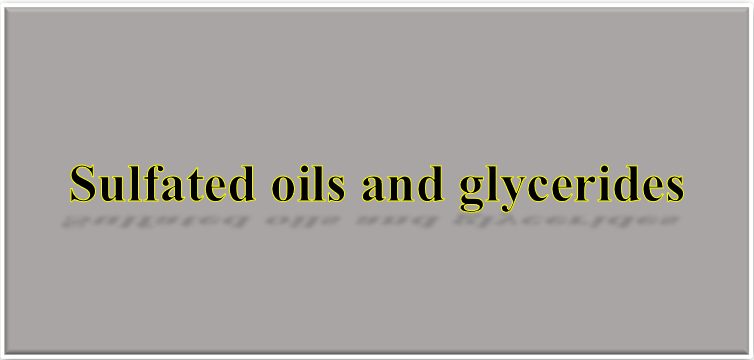Moisturizers are products that are usually emulsions, either O/W or W/O. There are two principal forms of these products:
a) semi-solid emulsions, known as creams; and
b) flowable emulsions, known as lotions.
Moisturizing products are differentiated not only by their emulsion type and/or physical form but also by their functional use. For this article, all-purpose creams, hand and body lotions and creams, facial moisturizing lotions, and facial ‘night’ creams, will be considered.
The purpose of moisturizing products is to restore and maintain the skin in a good-looking, fully moisturized condition. To maintain this condition, the stratum corneum must be in a fully hydrated condition that allows flexibility and elasticity. In most products, this moisturization is accomplished by a combination of hydrating by water followed by the actions of occlusives and humectants. Emulsion products of either O/W or W /O break down when rubbed out on the skin, and add water from their composition to the surface layers of the stratum corneum. This hydrating effect by water accounts for the instant appearance benefits, including the reduction of visible dry flakes and chapping. Less immediate effects occur through occlusivity and humectancy. Occlusivity occurs when the transepidermal water loss is slowed through reduction of the moisture vapor transmission rate. Humectancy is a separate but related phenomenon, in which materials that have an affinity for water:
a) help bind water to the skin;
b) resist evaporation from the skin; or
c) under certain circumstances, attract water to the skin.
All-purpose creams
All-purpose creams are typified by a W /O emulsion or by high oil content O/W emulsions. These products are for general face and body usage and generally have a heavy consistency and significant drag on rub-out. In addition, a small amount of product is able to cover a large area. Many all-purpose creams contain from 30-70% oil phase, resist wash-off, and are excellent protective as well as treatment products. They represent a very significant percentage of the European mass moisturizer market, and are often sold in flat packs (tins) or tubes. Performance characteristics and testing should focus on tests to maximize a reduction in the moisture vapor transmission rate, resistance to wash-off and a prolonged improvement to the skin, as demonstrated by regression analysis. Lighter weight, more modern products are, however, becoming popular.
Hand and body lotions
Hand and body lotions are generally O/W emulsions, with typical lotion products containing 10-15% oil phase, 5-10% humectant, and 75-85% water phase. They are characterized by easy flow and pumpability, fast rub-in, and a lack of stickiness after rub-in. Most of these products are sold in bottles with or without pumps, or in tubes. Their primary performance characteristics are their ability to instantly hydrate skin and to relieve dry skin symptoms. In addition, they should have excellent profiles in moisture vapor transmission rate reduction and prolonged improvement to the skin.
Hand and body creams
Most modern hand and body creams are O/W emulsions with greater levels of oil phase and possibly higher humectant levels than lotion products. They generally contain 15-40% oil phase and from 5-15% humectant phase. These products are easy to apply, have a reasonably fast rub-in, good esthetics, and often resist wash-off. They are typically sold in jars or tubes. Their performance characteristics are similar to hand and body lotions, often with the added benefit of more resistance to wash-off.
Facial moisturizer lotions
In terms of esthetics, facial moisturizer lotions are very different from hand and body lotions. They contain occlusive agents and humectants at the lower concentration levels of hand and body lotion formulations. Great attention is paid to quick-breaking, instant-absorbing products with no greasy after-feel. These effects are obtained by the use of emulsions that break down quickly, dry to a matte finish, and utilize light emollients such as esters and fatty alcohols and, where appropriate, additives such as volatile silicones. Performance characteristics are good moisturizing capability, the ability to reduce moisture vapor transmission rate rates, and also an immediate and a short-duration effect on superficial facial lines. Visual performance effects and esthetics are key factors in successful products.
Facial moisturizer creams: night creams
Facial moisturizer creams are often sold as night creams or heavier-duty moisturizer products than their lotion counterparts. They generally have higher levels of occlusive and humectant materials than facial moisturizer lotions but are formulated (with esthetics as a principal factor) using lighter emollients, quick-breaking emulsions, and controlled levels of humectant materials. Additives such as volatile silicones are often added to improve rub-in, break, and a non-greasy after-feel which, together with a matte finish, are key esthetic features. Performance characteristics are excellent moisturizing capabilities and a good effect on superficial facial lines.
1- Blank, I.H. (1952) Factors which influence the water content of the stratum corneum. J. Invest. Derrnatol. 18 433-440.
2- Blank, I.H. (1953) Further observation on factors which influence the water content of the stratum corneum. J. Invest. DermatoI. 21 259-271.
3- D.F. WILLIAMS and W.H. SCHMITT (1996) Chemistry and Technology of the Cosmetics and Toiletries Industry.
4- Laden, K. and Spitzer, R. (1967) Identification of a natural moisturizing agent. J. Soc. Cosmet. Chern. 18351-360.
5- Rieger, M.M. and Deem, D.E. (1974) Skin moisturizers II. The effects of cosmetic ingredients on human stratum corneum. J. Soc. Cosmet. Chem. 25 253-262.
6- Bissett, D.L. and McBride, J.F. (1984) Skin conditioning with glycerol. J. Soc. Cosmet. Chern. 35345-350.








